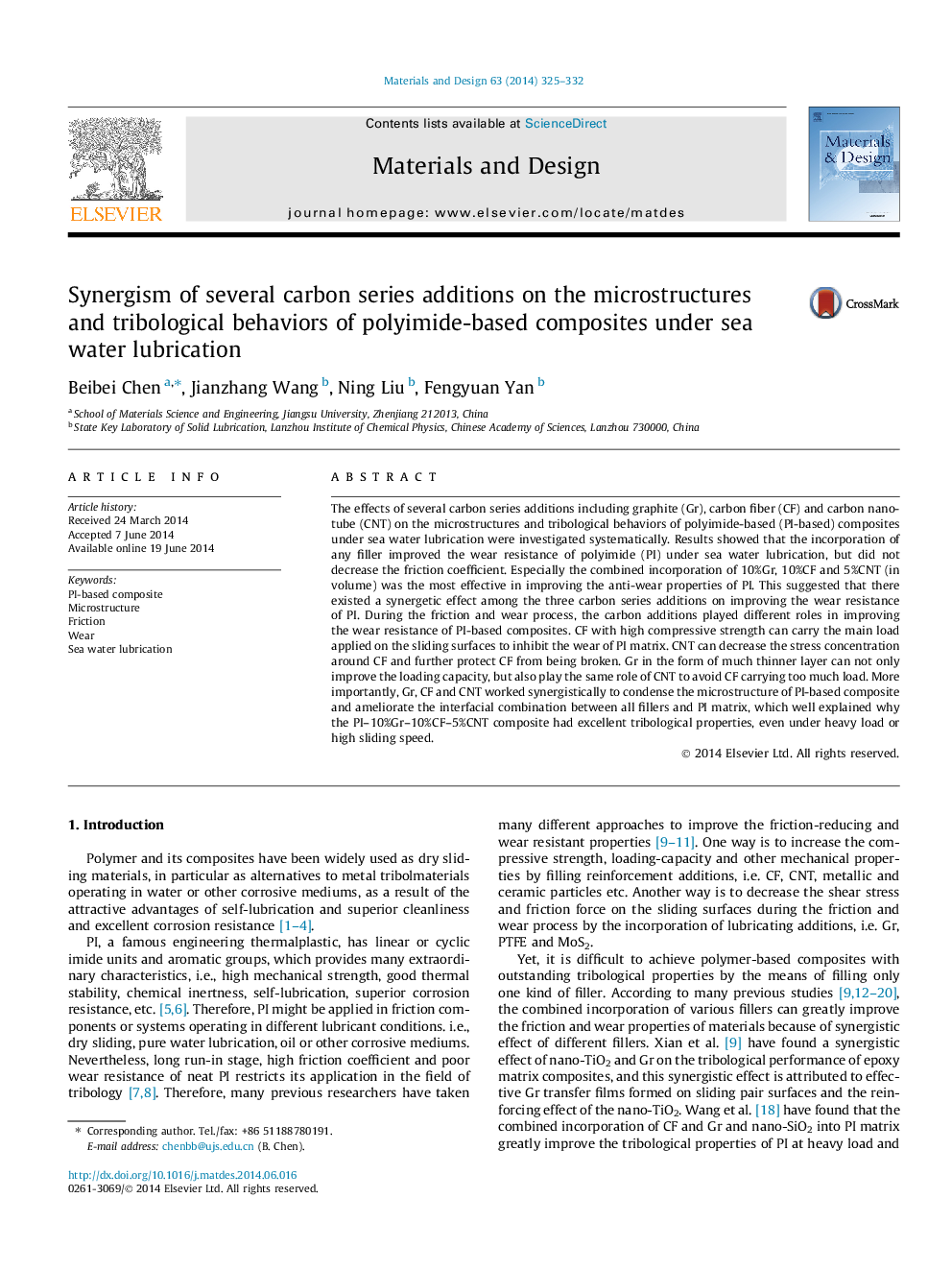| Article ID | Journal | Published Year | Pages | File Type |
|---|---|---|---|---|
| 829009 | Materials & Design (1980-2015) | 2014 | 8 Pages |
•The tribological behaviors of PI-based composites in sea water were investigated.•The microstructures of various PI-based composites were analyzed.•The synergistic enhancement of carbon series additions on PI was discussed.•PI–10%Gr–10%CF–5%CNT had the best wear resistance under sea water lubrication.
The effects of several carbon series additions including graphite (Gr), carbon fiber (CF) and carbon nanotube (CNT) on the microstructures and tribological behaviors of polyimide-based (PI-based) composites under sea water lubrication were investigated systematically. Results showed that the incorporation of any filler improved the wear resistance of polyimide (PI) under sea water lubrication, but did not decrease the friction coefficient. Especially the combined incorporation of 10%Gr, 10%CF and 5%CNT (in volume) was the most effective in improving the anti-wear properties of PI. This suggested that there existed a synergetic effect among the three carbon series additions on improving the wear resistance of PI. During the friction and wear process, the carbon additions played different roles in improving the wear resistance of PI-based composites. CF with high compressive strength can carry the main load applied on the sliding surfaces to inhibit the wear of PI matrix. CNT can decrease the stress concentration around CF and further protect CF from being broken. Gr in the form of much thinner layer can not only improve the loading capacity, but also play the same role of CNT to avoid CF carrying too much load. More importantly, Gr, CF and CNT worked synergistically to condense the microstructure of PI-based composite and ameliorate the interfacial combination between all fillers and PI matrix, which well explained why the PI–10%Gr–10%CF–5%CNT composite had excellent tribological properties, even under heavy load or high sliding speed.
